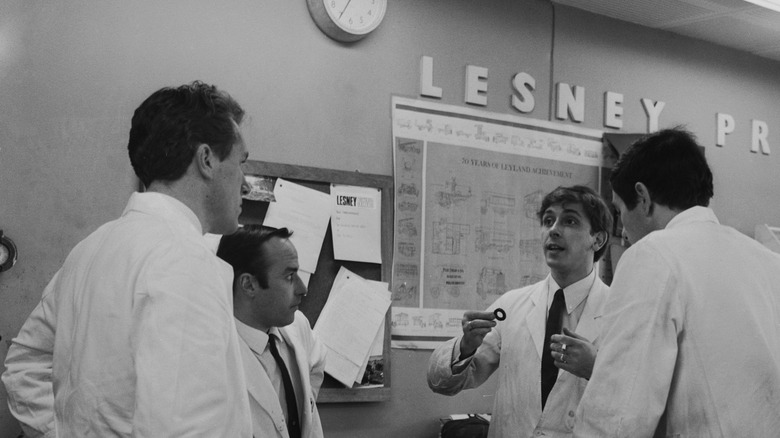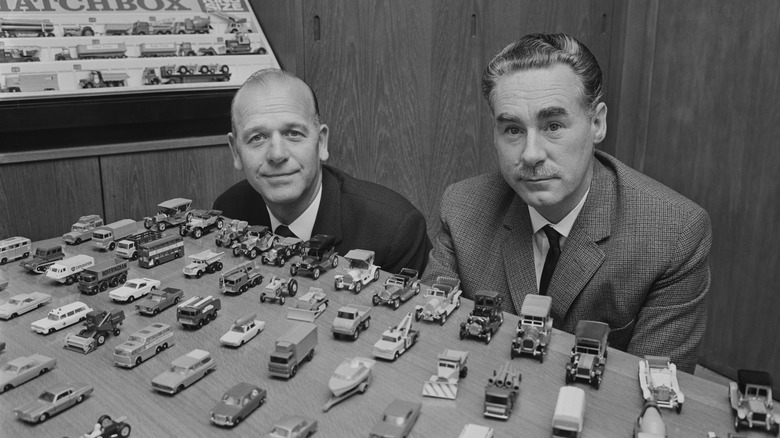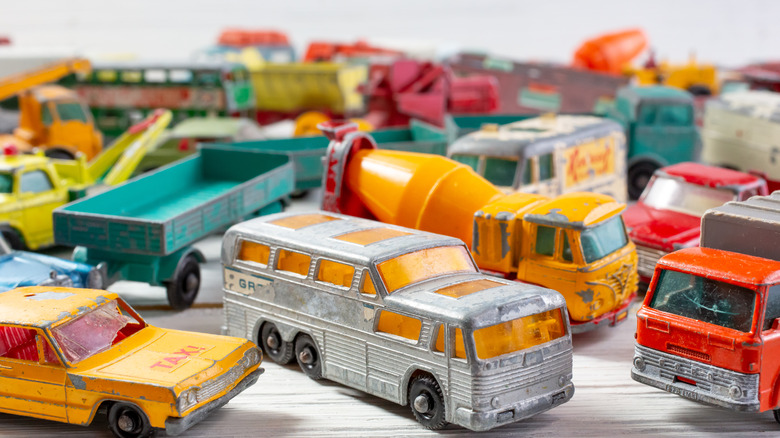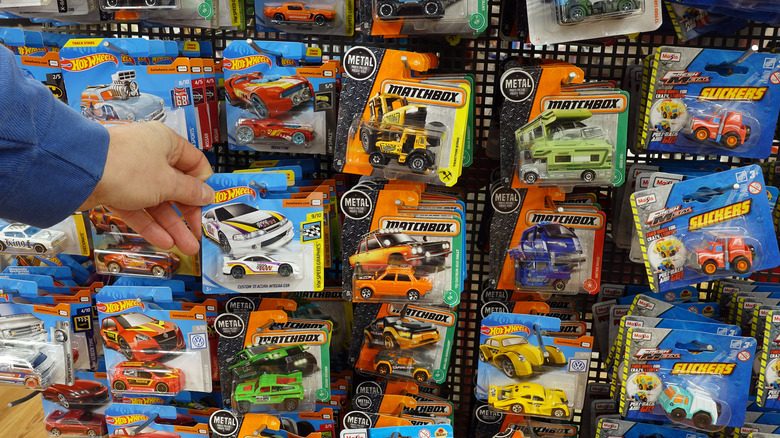What Happened To Matchbox Cars?
Matchbox cars have been a part of peoples' childhoods for decades. It almost seems as though there's a common childhood memory of having a huge collection of the small, colorful, very painful to accidentally step on, die-cast cars
That ubiquity has earned Matchbox the same treatment as Kleenex, Velcro, and Zamboni where the brand name transcends the product itself. Any brand of tissues is often referred to as Kleenex, hook-and-loop fasteners are referred to as Velcro, ice resurfacers are Zambonis. And to a lot of people, any small die-cast car is a Matchbox car, even if "Hot Wheels" is emblazoned across the side.
According to Best Ride, Matchbox cars are often credited with kickstarting a life-long love of cars in kids around the world, and it all started because a father wanted to make a toy for his daughter that she could take with her to school. The school's rule was that any toy had to fit in a matchbox.
Matchbox cars got their start in the United Kingdom
Leslie Smith and Rodney Smith weren't related. The two met during World War II while serving in the Royal Navy. When the war ended, the two teamed up to start a company which they called Lesney Products, a name they came up with by combining parts of their first names (via Best Ride).
Lesney Products was based in the London borough of Hackney, and the company specialized in die casting. According to Dynacast, die casting is a process in which molten metal is poured into steel molds which are called dies. It's a good way to make a lot of something with limited variance between each finished product. Lesney Products produced parts that were then used in producing cars and agricultural equipment. The company made other products too, one of which was a device that pressed small pieces of bread so they would be easier to put on fishhooks, which was evidently difficult without some kind of specialized piece of equipment.
The company rented out part of their facility to an engineer named Jack O'Dell, but eventually, he joined the company, according to Best Ride.
Lesney Products gets into toymaking
The company was approached to make a toy gun, and the thought arose that maybe Lesney needed to hop into the toy-making business. Their idea was that if the business they received from the auto and agriculture industries dried up, they could start making toys until things picked up again (via Best Ride).
O'Dell designed the company's first toy in 1948, although "designed" may be a stretch. The toy was a car, specifically an Aveling Barford road roller. The problem was Lesney's version was nothing but a copy of a toy made by another company called Dinky Toys.
According to Matchbox History, Lesney ran into a problem between 1950 and 1952. The Korean War led to the British government restricting zinc usage for producing products that were deemed non-essential to the war effort. Children's toys fell into that category. However, by 1953 they were back to producing toys.
The first Matchbox cars
In 1953, the United Kingdom was celebrating Queen Elizabeth II's coronation and Lesney got in on the fun. They designed and produced a die-cast replica of the Queen's coronation coach, and it became a hit. Over one million were sold, and the success was enough for the company to place all its focus on building die-cast models (via Best Ride).
An old, tired cliché is that necessity is the mother of invention, but it's apropos when it comes to the history of Matchbox cars. Lesney's version of the Aveling Barford road roller was popular, but his daughter encountered a problem with it: it was too big for her to take to school. The only toys she was allowed to take to school had to be small enough to fit inside of a matchbox. So, O'Dell decided to take the road roller model and scale it down even more so that it would meet his daughter's school's matchbox rule.
Lesney began producing these small models, and they quickly became more popular than their larger-scale counterparts, and by the next year, Lesney was only producing the matchbox-sized cars.
Matchbox takes over the world ... of die-cast cars
According to Matchbox History, Matchbox cars were introduced to the United States toward the end of the 1950s. A salesman from New York named Fred Bronner handled Lesney's sales in the United States. In 1964, Lesney bought out Bronner's stock of Matchbox cars and he, in turn, was selected to lead a new United States division of Lesney Products.
One of the major reasons for Matchbox's success was that they retailed for 39 cents, making them fairly accessible to kids. But by the end of the 1960s, Matchbox's once virtually uncontested reign as the top dog in the die-cast car world became very much contested as toy giant Mattel introduced Hot Wheels. Hot Wheels were known for moving much faster than Matchbox cars. So, in a move that mirrors the arms race seen in the automotive industry, Matchbox developed a new, frictionless axle for their new line of "Superfast" cars.
The two sides would continue to battle each other for die-cast car supremacy would last for more than 20 years.
Matchbox today
Through the late 1970s and 1980s, Lesney Products and Matchbox dealt with financial issues, and the company was bought and sold several times until they were acquired by Tyco Toys in 1992 (via Matchbox History). Tyco Toys was based in Mt. Laurel, New Jersey, and started with electric model trains, but the company opted to diversify what they had to offer and that led to huge success, and ultimately the Matchbox purchase.
However, just a few years later in 1997, Tyco Toys was acquired by — of all companies — Mattel. This new acquisition meant that Matchbox and Hot Wheels, once bitter rivals, were now corporate cousins. That's how the situation remains to this day. Both Matchbox and Hot Wheels are still produced under the Mattel umbrella.
Meanwhile, vintage Matchbox cars are still highly collectible, per Collector's Weekly, and old Matchbox cars — especially if they're still in their original packaging — can still be worth quite a bit of money.





